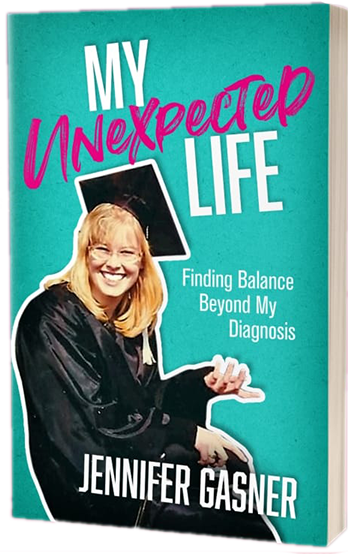When I became a Friedreich’s Ataxia Research Alliance (FARA), ambassador in 2020, I was in the middle of writing my memoir My Unexpected Life: Finding Balance Beyond My Diagnosis. Although I knew my book about living with Friedreich’s ataxia (FA), would one day be published, I wondered what I had to contribute to the group.
At the FARA event in Anaheim, I enjoyed meeting people with FA who could relate to my wonderfully weird body. There was a companionable silence among us—we expected coughing fits and patiently listened to everyone speak.
The event was also incredibly humbling. My heart raced and my palms sweated, intimidated by the accomplishments of the others. Most of them were 10-20 years younger than my age of 47. I wanted to prove my own experiences were valuable too. But I didn’t want to come off conceited.
In the beginning of my tenure, I felt like an insecure teen trying to fit in. I worried about making a good impression and seeming to positively represent people with FA. I found myself going back over some things I said and judging myself for being too dorky, annoying, and arrogant in my speech or appearance. It seemed ridiculous to be my age and worried about what other people thought of me.
One of the first things I realized when I became a FARA ambassador was how different the experience of being diagnosed in 1990 is compared to now. First, a blood test indicating the gene repeat exists. It’s definitive and clear. I went through several spinal taps, (now they call them spinal punctures because I guess that makes them sound nicer), and a couple of doctors who had no conclusive test to make their diagnosis with—just their powers of deduction. (More details in my book.)
In addition, now it is easier to find information about the disease. In 1990, the Internet wasn’t around, I didn’t have quick and easy access to news about FA. All I had were a few copies of a medical dictionary that my Mom thankfully filed away for me, making it difficult to read over and over. I can only imagine hearing the diagnosis and googling it only to find the real dire consequences of the disease and being able to pull that information up daily.
Since its creation in 1998, FARA has been a great support to individuals with FA, their loved ones and caregivers. In 1990, me and my family had almost no resources. We tried to get involved with the Muscular Dystrophy Association support group but it was demoralizing and discomforting. (Again, read all about it in my memoir.)
People living with FA today know more about stretching and exercising and have greater access to helping them “use it before they lose it.” One example is the recumbent tricycle. In the 1990s, when I could still use my legs to peddle, those bikes may have existed, but their popularity was not even close to what it is now. If I had access to one in the 90s, I could’ve maintained some range of motion and elasticity in my now tight muscles. But my legs are more decorative than functional now, and I can not participate in the biking events that many people with FA do. It’s a branch of the community, I can’t join in.
One of FARA’s biggest impacts is the understanding of the science of FA. Some of the younger ambassadors seem to have a level of understanding of the mechanics of the disease that I never had an interest in. One thing I’ve read a lot is FA is an autosomal-recessive disorder. I still don’t know what the hell that means, but some ambassadors probably think that’s a pretty basic way to start describing a complex disease. They’ve gone into research and know the diseases’ intricacies. My head hurts just thinking of it.
What do I have to contribute to FARA?
Yes, I am living with FA and have been since I was a teen, but I don’t understand it like people who have been involved in FARA since its beginning. I can’t participate in the biking events. And as I explained in my previous post, I struggle with the need for the cure.
In October 2023, at the FARA Symposium in King of Prussia, Pennsylvania, I like to think I proved my worth. I finally felt relaxed. I didn’t feel my heart pumping or get tingles in my stomach.
I had finished the book and was selling it. I hope I was able to shine a light on disability in general and FA specifically. Writing a book is no small feat for anyone, with or without a chronic disease. This was proof I had accomplished something to contribute to the FA community.
Until the next. . .


So pleased to know you!
Jennifer, I’m just a young man with FA here to say that you don’t need to prove anything to the FA community. You, as a person, are valuable and the FA community will love and support you no matter what you do. Although the book is amazing and you are contributing just by writing truthfully and vulnerability. Thank you.